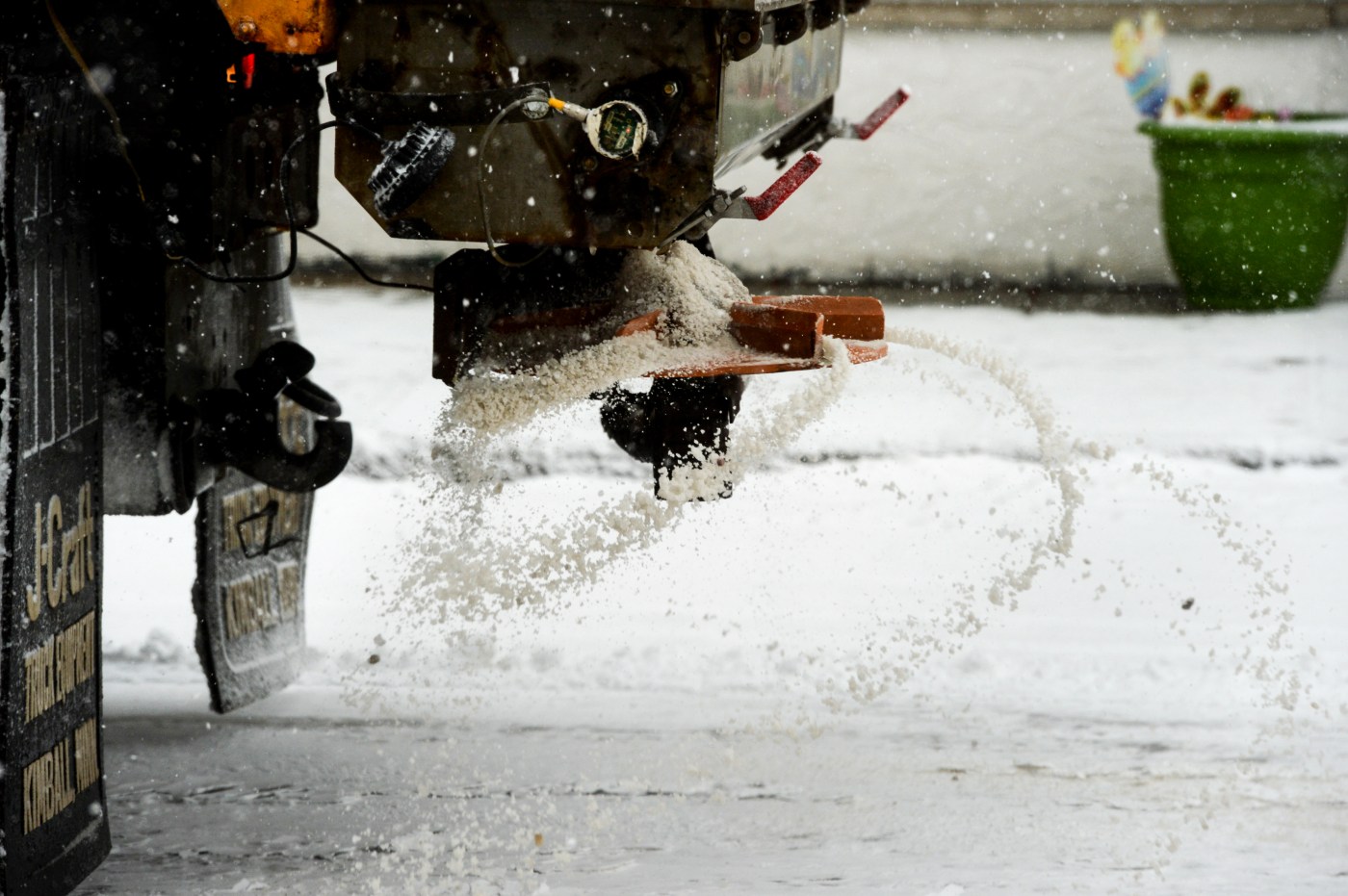
Hold the road salt: 67 Minnesota waterways now ‘impaired’ due to chloride
After Minnesota’s first major snowfall this winter, pollution experts say people clearing snow and ice from sidewalks and driveways should avoid using too much road salt — a major pollutant in the state’s waterways.
Every year, Minnesotans use an estimated 445,000 tons of salt to clear roads, sidewalks, driveways and parking lots. When the ice melts, chloride in that salt runs into storm drains and nearby lakes, rivers and streams, where it’s toxic to fish and other aquatic life.
The results are grim: The state’s draft 2024 impaired waters list includes 67 water bodies with excess chloride levels, up from 54 waterways listed two years ago.
“Chloride is actually toxic to our freshwater fish and insects that are living in our lakes or streams, our wetlands and our rivers,” said Brooke Asleson, who coordinates the chloride reduction program at the Minnesota Pollution Control Agency. “And it really does not take a lot of chloride before it starts to create problems for our freshwater communities.”
Road salt is the biggest source of chloride pollution in lakes, streams and groundwater. It only takes 1 teaspoon of salt to permanently pollute 5 gallons of water.
Asleson said Minnesotans can help by reducing their use of salt — and relying on their shovel first.
“The first practice that we really want folks to embrace is to get out there and physically remove that snow and ice,” she said. “If we can get out there early and often and prevent that snow and ice from getting compacted, we can save ourselves a lot of work overall.”
Salt doesn’t melt ice effectively when it’s below 15 degrees. Asleson recommends using a small amount of sand or chicken grit for traction if needed on slippery spots, and sweeping it up later.
If a de-icer is needed, use only a small amount, Asleson said. One coffee cup of de-icer is enough to treat a 20-foot driveway.
Chloride pollution isn’t just an urban problem. Most of the chloride-impaired waterways are in the Twin Cities metro area, but there are also several in greater Minnesota, including Duluth and Alexandria.
“As we continue to monitor more closely for chloride, we’re starting to see or find more streams, more lakes and wetlands that are too high,” Asleson said.
In an effort to encourage “smart salting” practices, the MPCA has been offering training for snowplow drivers and property maintenance supervisors for several years. It’s now offering a virtual workshop for community leaders, including local government officials or people who sit on environmental or housing boards.
Related Articles
St. Paul’s Hamm’s Brewery, Shoreview’s Rice Street Crossings projects among 10 Met Council grant recipients
Other voices: Rumors of electric vehicles’ demise greatly exaggerated
Letters: Cover the good work that is and can be done to keep our region healthy
The 17 movies we’re most excited about in 2024
12 new year’s resolutions for sustainable living


